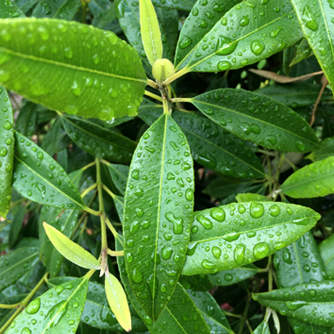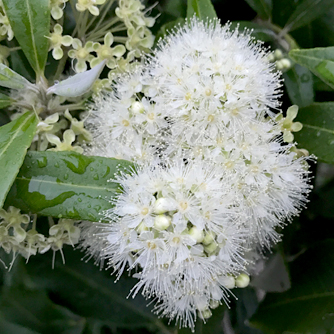Lemon Myrtle
BackLemon Myrtle (Backhousia citriodora) is an absolute delight for any garden. It’s a small growing native tree with leaves that release a strong lemon scent when crushed or after rain. In spring new growth is tinged red and in summer you’ll get abundant clusters of creamy white flowers which are loved by butterflies. Lemon myrtle is quite versatile and can be used as a screen, hedge or feature tree and is suitable for most gardens and courtyards.
How To Grow Lemon Myrtle
Originally a rainforest tree lemon myrtles prefer good soil and warm conditions. In milder areas they can handle full sun positions but in hot dry climates plant in dappled shade. Protect young trees from frost but older tress are more tolerant.
Enrich the soil before planting with plenty of organic compost and manure to encourage better growth. Apply gypsum if the soil is heavy clay as this will help to break it up and improve drainage. Once planted water in with OCP eco-seaweed and then mulch around the base. If you are short on space you can grow a lemon myrtle in a large pot but make sure you keep it moist during hot, dry weather.
Climate will affect the height of the tree but on average expect about 4m by 2m wide; taller in warm areas and less in colder areas. Height and shape can easily be maintained by pruning if required.

The aromatic lemon myrtle foliage
Fertilising Lemon Myrtle
When trees are young and establishing apply a mixture of OCP eco-seaweed and OCP eco- aminogro every 2-3 weeks to maximise growth. If growing in pots then keep this treatment up as well. For established trees in the ground a layer of compost or manure every spring and autumn is usually enough to keep them happy. If you have particularly poor soil you can also add some pelletised organic fertiliser. Don’t forget to top up the mulch as well.
Pruning Lemon Myrtle
If using lemon myrtle as a screen or hedge then regular light pruning will be required to encourage dense growth. If growing as a feature tree then choose a specimen that has a single trunk and as the plant grows remove lower branches to create a “tree” shape. In general a light prune after flowering will keep the plant tidy but isn't always necessary.
Pests and Diseases of Lemon Myrtle
Lemon myrtle are usually easy to grow with few problems provided they have rich soil and enough moisture in summer. However keep an eye out for:
- Aphids and mites can weaken growth and can also cause sooty mould. Control by spraying with OCP eco-oil.
- Scale may appear but can be controlled with sprays of a horticultural oil.
- Myrtle rust is a newish disease that infects plants in the myrtle family, including lemon myrtle. It only attacks new growth and young plants seem to be more vulnerable than established trees. Watch for small lumpy spots that develop a reddish purple halo and yellow clusters of spores. Treat by removing all infected foliage and spray thoroughly with OCP eco-fungicide (it has emergency permit approval for this use). Repeat spray a week later. For even better results also add to the spray: OCP eco-oil (improves the spray’s sticking ability) and OCP eco-seaweed (improves tree health).

Hard to miss the flowers on a lemon myrtle!
Microsoft.CSharp.RuntimeBinder.RuntimeBinderException: 'Newtonsoft.Json.Linq.JValue' does not contain a definition for 'image' at CallSite.Target(Closure, CallSite, Object) at System.Dynamic.UpdateDelegates.UpdateAndExecute1[T0,TRet](CallSite site, T0 arg0) at CallSite.Target(Closure, CallSite, Object) at AspNetCore.Views_Partials_grid_editors_media.ExecuteAsync() in C:\home\site\wwwroot\Views\Partials\grid\editors\media.cshtml:line 62 at Microsoft.AspNetCore.Mvc.Razor.RazorView.RenderPageCoreAsync(IRazorPage page, ViewContext context) at Microsoft.AspNetCore.Mvc.Razor.RazorView.RenderPageAsync(IRazorPage page, ViewContext context, Boolean invokeViewStarts) at Microsoft.AspNetCore.Mvc.Razor.RazorView.RenderAsync(ViewContext context) at Microsoft.AspNetCore.Mvc.ViewFeatures.HtmlHelper.RenderPartialCoreAsync(String partialViewName, Object model, ViewDataDictionary viewData, TextWriter writer) at Microsoft.AspNetCore.Mvc.ViewFeatures.HtmlHelper.PartialAsync(String partialViewName, Object model, ViewDataDictionary viewData) at AspNetCore.Views_Partials_grid_editors_base.ExecuteAsync() in C:\home\site\wwwroot\Views\Partials\grid\editors\base.cshtml:line 11


